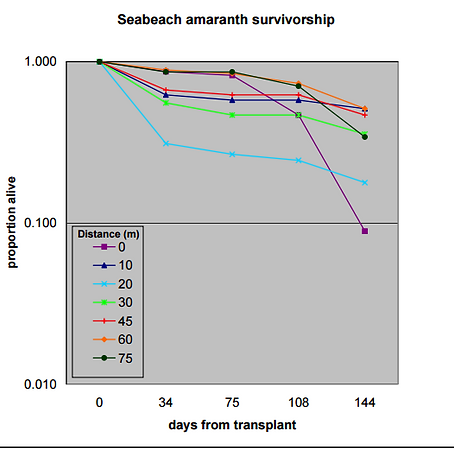Bulding Dunes:
Seabeach Amaranth (Amaranthus Pumilus)
Seabeach amaranth is a tiny plant that is restricted to beach areas on the Atlantic Coast, covering from Cape Cod to the central South Carolina coast. They usually grow on the dunes closest to the shore. This species of amaranth traps sand and keeps it in place, which then begins dune formation. Therefore creating suitable habitats for birds such as black skimmer, piping plover, and roseate tern that all nest in the location, as well as for plants such as beach grass and sea oats. After a natural disaster such as hurricanes and storms, the seabeach amaranth populating the area is usually wiped out. But, then again, the lack of ground cover due to the natural disaster produces a suitable growing spot for the amaranth, therefore restarting the dune formation cycle. This is why the species is considered foundational. Seabeach amaranth is a specialist species. This is because they are limited only to the bottom of dunes closest to shore. As well as in a habitat that lacks other plants, due to the fact that this species of amaranth is intolerant to competition.


Seabeach amaranth is R-selected as well. This is because they live in an unstable environment that is density independent. They also have some key traits of R-selected species such as, small size, produce many offspring, mature early, have a short life-expectancy, and each individual usually reproduces only once.
Seabeach amaranth is usually the first inhabitant of the ecosystem after a storm or hurricane has wiped out the population. After small dunes have been structured by the amaranth, other plants such as dixie sandmat, beach grass, and sea oats begin to grow on the upper layers. This attracts insects such as webworms, and mammals such as feral horses, since they are herbivores. As the dunes get bigger, birds such as terns and plovers make nests in the area. They then feed their offspring with smaller insects, such as the webworms and some beetles. Eagles often prey on the nests, and smaller birds, so they are attracted to the area as well. Due to human activities in beach areas, unmonitored dogs may make their way to the nests and feed on the baby birds. Snakes may also occasionally attack the nests and smaller birds.

Seabeach amaranth often serve as a food source for small insects. They have little to no competition due to the fact that they grow in areas that lack other plant life, simply because they are intolerant to competition. They have a commensalistic relationship with the larger birds like tern, since only the terns benefit and the amaranth is not affected in any way at all. They have a mutualistic relationship with smaller birds like the plover, since the amaranth gives the plover a nice stable habitat, whereas the plover eats off the tiny insects that harms the amaranth, therefore benefitting both.
